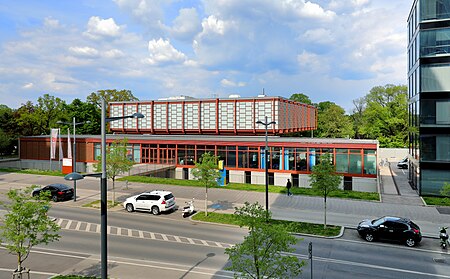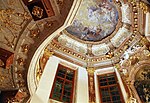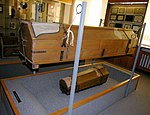Belvedere 21

Belvedere 21, formerly 21er Haus or Einundzwanziger Haus (English: House 21), is a modernist style steel and glass building designed by Austrian architect Karl Schwanzer (1918–1975). Originally constructed as the Austrian pavilion or temporary showroom for the Expo 58 in Brussels, it was later transferred to Vienna to house the Museum of the 20th Century, which explains why it was first nicknamed "20er Haus" (House 20). Between 1979 and 2001, the building also acted as a depository for contemporary art works. From 2009 to 2011, it was remodeled by the architect Adolf Krischanitz and consequently renamed 21er Haus to reflect the 21st century. It was renamed Belvedere 21 in 2018.
Excerpt from the Wikipedia article Belvedere 21 (License: CC BY-SA 3.0, Authors, Images).Belvedere 21
Arsenalstraße, Vienna KG Landstraße (Landstraße)
Geographical coordinates (GPS) Address Nearby Places Show on map
Geographical coordinates (GPS)
| Latitude | Longitude |
|---|---|
| N 48.185833333333 ° | E 16.383333333333 ° |
Address
Blickle Kino
Arsenalstraße
1030 Vienna, KG Landstraße (Landstraße)
Austria
Open on Google Maps










